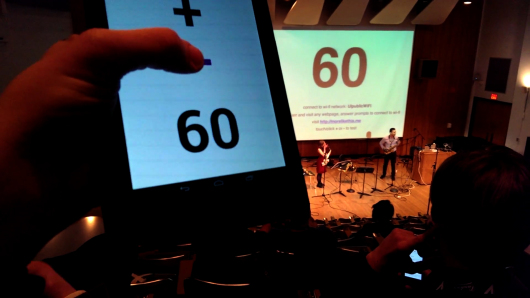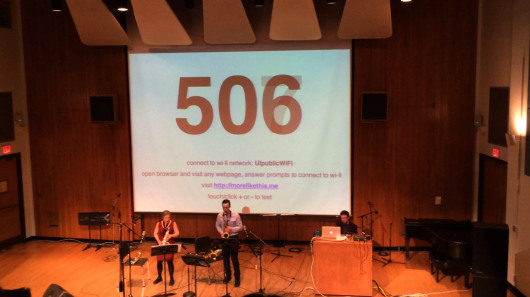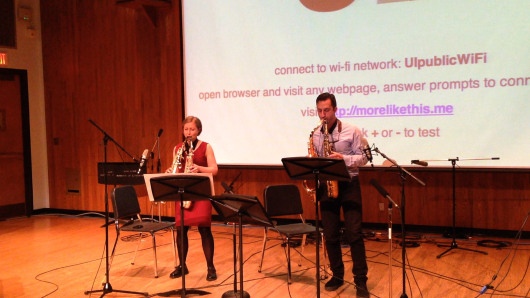More Like This examines the interactions that occur within a metricated musical environment. There are four primary performers: each of the two saxophonists, a live artificial intelligence system (AI), and the audience. Each contributes to the work in one or more ways.
In terms of musical material, the saxophonists play from a pre-composed score of fragments while the AI generates sounds using live electronics. However, the way this material unfolds over time is determined by a complex interaction between the four groups. The order of the fragments and the specific sounds generated are all real-time choices made by the AI. Once the work starts, the audience provides regular feedback about their preferences using smartphones. The AI receives this feedback and considers it—along with what it hears from the saxophonists—as input into its own decision process. Concurrently, the saxophonists and AI offer their own feedback about the rest of the ensemble, creating a feedback loop that influences future actions.
Feedback takes the form of “+” or “-“ actions—in other words, audience members (and the saxophonists) can constantly rate what they hear up or down in real time. The accumulated metric from all feedback is displayed via projection during the performance. How does audience participation change the performance? What effect does collective metrication have on the types of musical material preferenced? In which ways will the on-stage performers change their direction in response to metric input from the others? More Like This offers an opportunity to explore these questions.
More Like This was commissioned and performed by Rhonda Taylor and Michael Ibrahim. It was premiered at the North American Saxophone Alliance Annual Conference, held at the University of Illinois at Urbana-Champaign in March, 2014.
Interview
Interview with SoundNotion TV’s Patch In
I sat down with the hosts of the SoundNotion TV show Patch In to discuss the premiere. We also talked about a variety of other topics, including Facebook metrics, the NSA, artificial intelligence in art, robotics, and more. You can watch the show above.


